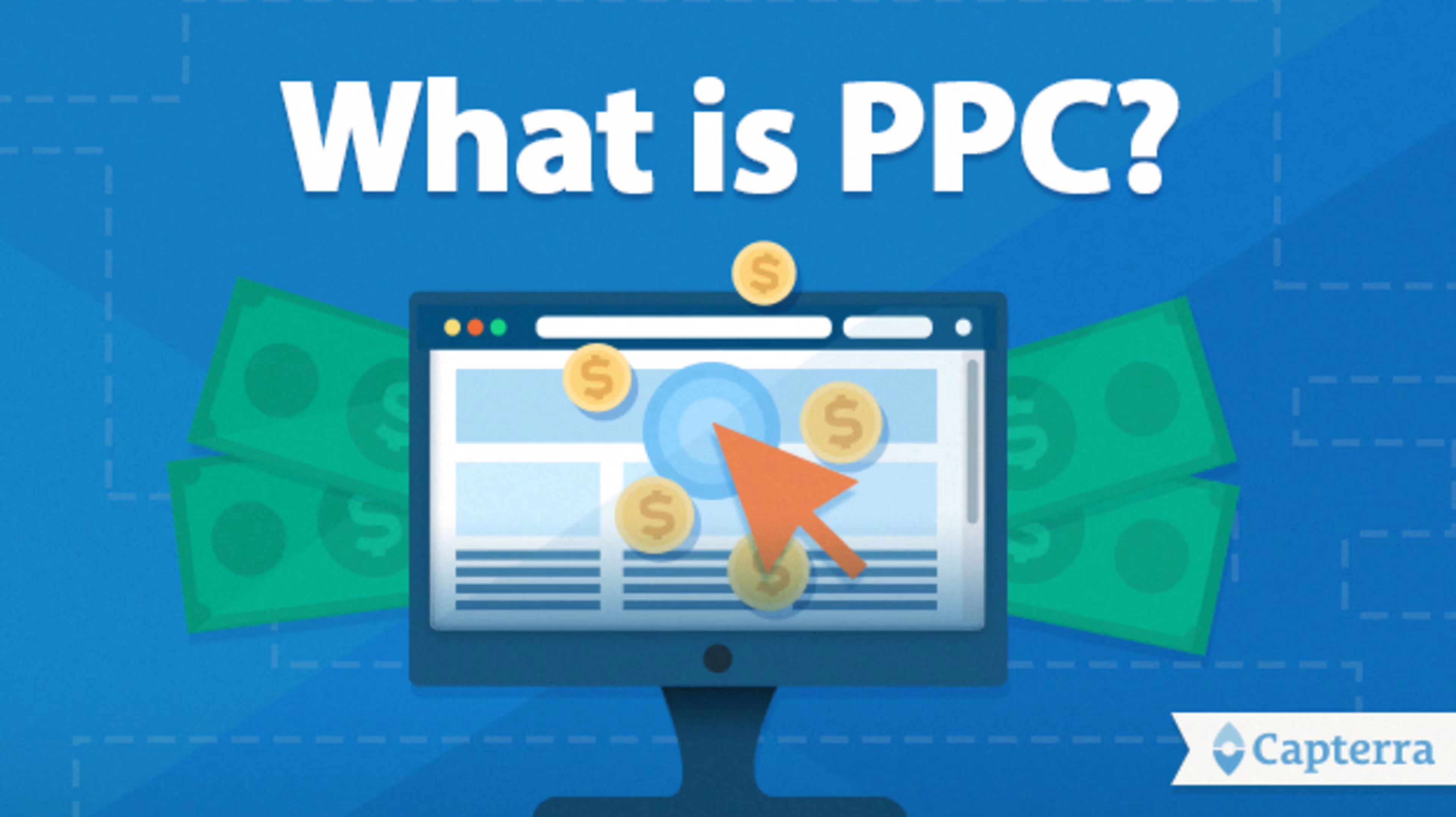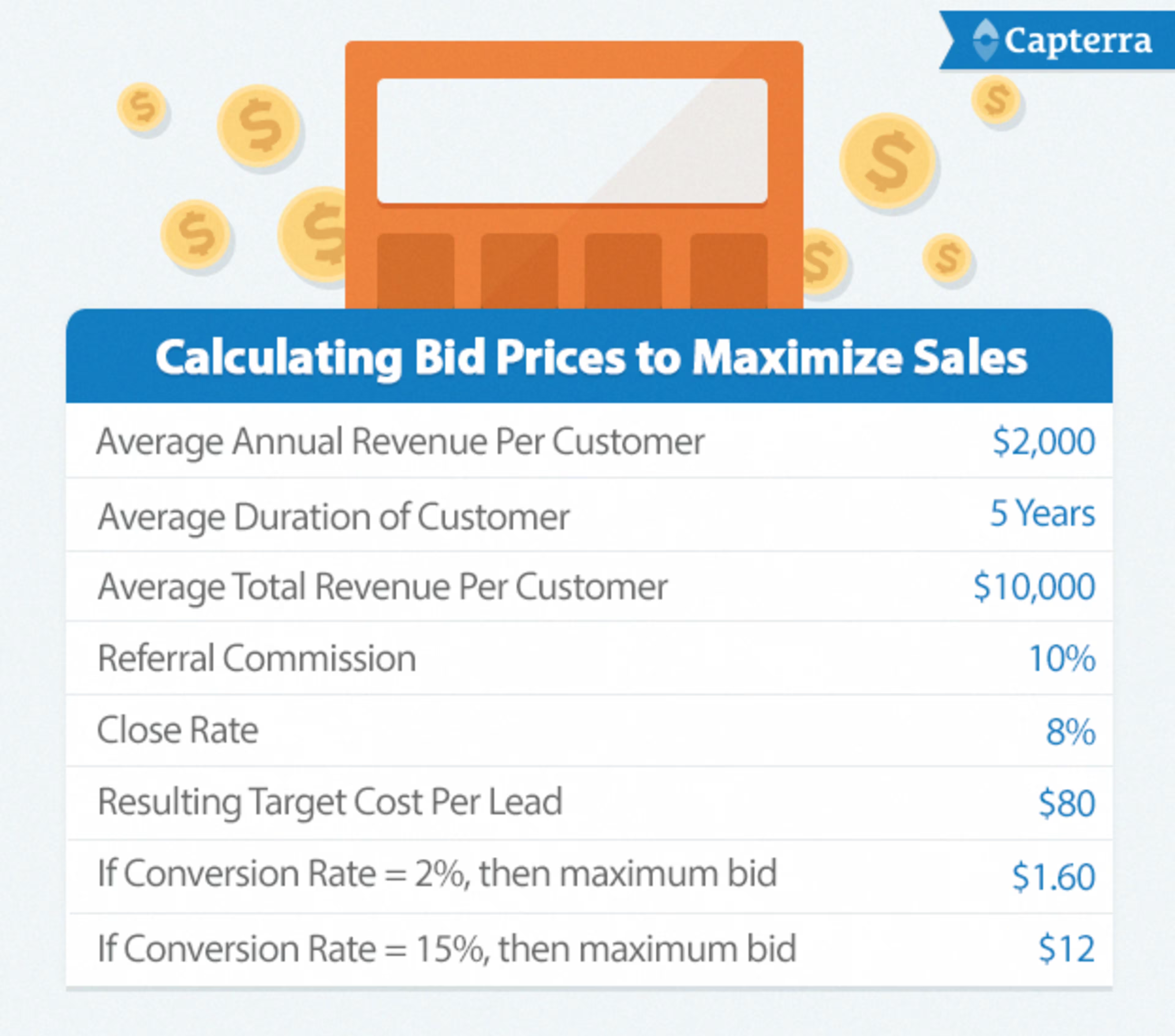Most of my friends are teachers, so when we talk about our jobs, I’m the black sheep of the group who works in business. Sooner or later, I say “B2B” or “SEO” and suddenly everyone’s looking at me like I’ve just casually mentioned quantum physics or something. (This usually results in my explanation of B2B vs B2C or SEO vs SEM, but ends pretty quickly since they have little interest in software marketing.)
The truth of the matter is that there are tons of weird words and acronyms that we marketers use daily; do you actually know what you’re saying when you say it?

PPC has become an incredibly important strategy for online marketing. Admit it, you know of it, but do you know what it is? Party People Committee? Pet Perfection Collusion? Peas Per Cup?
Answer: Pay-Per-Click.
To help you from making the embarrassing Google search “what is ppc,” I’ve written this guide that will give you the basic knowledge about PPC advertising and how your software sales can benefit from it.
What is PPC?
Simply put, Pay-Per-Click is “a model of internet marketing in which advertisers pay a fee each time one of their ads is clicked.” The price you pay per click is typically based on your bid for that specific advertisement. Examples of where you’ll see PPC ads include search engines (Google, Bing, etc.), banner ads, social media (Twitter, LinkedIn, Facebook), and Capterra.
For example, you can set your maximum bid per click to be $3, meaning you may pay less than $3, but never more, for each click. You would only pay less if the next competitor is only bidding say $2 for that keyword. Most ad channels will just charge you what you need to outrank the competitor, which in this case would be $2.01. However, if someone is willing to bid more money, say $5 per click, for that keyword, then their ad will be shown over yours.
This doesn’t mean you should spend hundreds of dollars for clicks just so you can have the number one position. The goal of PPC advertising is to increase click-throughs to your website and then convert those leads into paying customers. Like any other marketing tactic, if you’re spending more than you’re making, there’s something wrong.
How Do You Decide What to Bid for a Click?
The chart below shows you an example framework for how to calculate the right bid that won’t leave your revenue in the red. I’ll also walk you through these calculations step-by-step:

First, before you launch a PPC campaign, you need to understand how much a customer is worth to you. In the software industry, there are two common ways to figure that out:
If you sell your software for a one time fee, then your total revenue per customer is simply the average revenue you get from a sale.
If you have a monthly, per-user, or annual billing model, we recommend you collect the average amount of revenue you earn per customer over a year. Then, multiply your average annual revenue per customer times the average number of years a customer uses your system. That will give you the total revenue per customer (also known as the Customer Lifetime Value or CLV).
After you have that number, you need to decide what percentage of the CLV you want to spend to acquire a new lead with your PPC campaign. A good benchmark we suggest is 10%. That way, for every new customer you acquire through the ad campaign, you are recouping 90%+ of the CLV. Of course, if you have a very low CLV because your software is low priced or free, 10% may put your resulting bid too low to even compete.
You can play around with how much you’re willing to spend on this “referral commission” to hit your specific company goals. For example, some companies that are only focused on growth and not concerned with profitability will devote 70%, 80%, or even 100% of their CLV toward acquiring new customers.
Once you decide on your referral commission, the next step is to determine what percentage of online leads you typically sign up to become a customer, also known as your close rate. If you have a list of people who have signed up for an online demo or a trial of your software in the past year, spend some time to research what percentage of those went on to become customers to calculate your close rate.
Next, multiply: total revenue per customer x referral commission x close rate, and the resulting number is your target cost per lead (CPL). That’s how much you should be willing to spend for every new web lead you generate from your PPC campaign.
Finally, the last step in your bid calculation is knowing what percentage of your web visitors convert into leads, otherwise known as your conversion rate. To figure out conversion rate, look at the number of people who filled out a form (such as a demo or trial sign-up) on your website or landing page over a certain timeframe. Then, divide that by the number of total visitors to your website or landing page over that same time frame.
Your target CPL x Conversion rate= the maximum amount you should bid on your PPC ad.
Two more important points to keep in mind when determining your PPC bids:
If you find yourself at a low position, don’t up your bid just to get to the top of the page! Even if you do convert some leads from that traffic, you’re still spending more for them than you’re making. Sure, you have to spend money to make money, but not at the expense of long-term growth. Make the bid that makes the most sense for your business.
When you do get the click, where are your visitors going? Your website or a landing page? Whatever you choose, make sure it’s optimized for conversions with these five important components.
PPC Advertising with Google
Probably one of the best examples of PPC in action is a Google search results page. You’ve seen them: you enter a search query and a bunch of links show up at the top or on the side with a small “Ad” symbol next to them. That is a PPC ad. Those companies paid to have their website show up when people search certain words or phrases.
Google search campaigns are run through Google AdWords, and advertisers can place a PPC bid on specific keywords. When a person searches one of those keywords, Google looks at which advertisers are bidding on that keyword and chooses which one will appear on the search results page, based on “... a combination of factors, including the quality and relevance of their keywords and ad campaigns, as well as the size of their keyword bids.”
WordStream has a great infographic that goes over exactly how the PPC model works with Google AdWords.
Capterra PPC Program
Capterra’s PPC Advertising Program is similar to Google AdWords, but with two key differences:
You don’t bid on keywords. Instead, you can choose to bid on the 300+ categories of software that Capterra helps businesses find.
Capterra is exclusively for B2B software solutions, so the users are more knowledgeable and further along in their software purchase than a typical Google searcher.
Capterra has more than 2,000 software companies that advertise their product through our PPC program. Every known software product is displayed on each software directory, but upgrading from a basic listing to a PPC listing gives you an edge over the competition.
Bids start at $2 per click and can be increased in $0.25 increments. The higher the bid, the higher up in the directory a vendor is displayed, exposing them to a higher volume of traffic that comes to that directory.
Learn more about Capterra’s PPC program by signing up to get a free traffic estimate for your product.
Now that you’re a PPC expert, check out this blog post for more advanced tips on optimizing your campaign and increasing lead volume.
Browse our list of top services and learn more about their features in Capterra’s advertising agency hiring guide, digital marketing agency hiring guide, and marketing analytics company hiring guide.